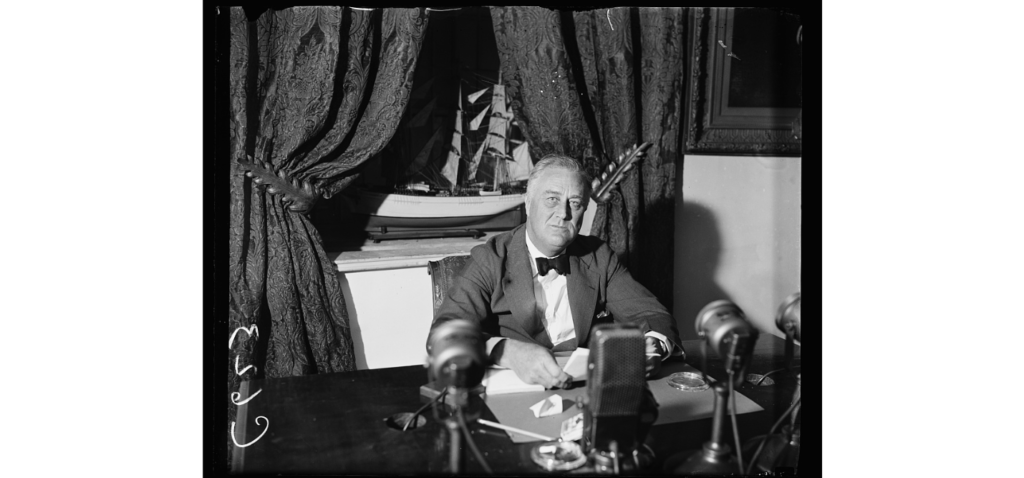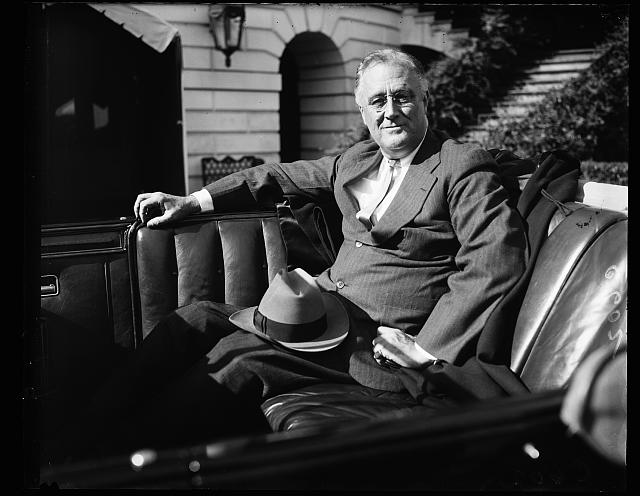
As one of the most iconic figures in American history, Franklin Delano Roosevelt (FDR) has left an indelible mark on the country that he served as President for over a decade. But his journey to the White House was not without its challenges, and perhaps the most significant of these was his battle with polio. The more we learn about his struggle, the more admiration we have for what he accomplished.
FDR’s life and struggles with polio
Born into a wealthy and influential New York family in 1882, Franklin Delano Roosevelt had a privileged upbringing, attending prestigious schools and universities before entering into a career in politics. However, in 1921, at the age of 39, his life was forever changed when he contracted polio, a disease that would leave him paralyzed from the waist down.
The impact of this diagnosis on FDR’s life was profound. Not only was he forced to give up his active lifestyle and his dream of becoming a professional sailor, but his disability also had a significant impact on his marriage and family life. FDR’s wife, Eleanor, became his primary caregiver, and their relationship was put under tremendous strain as a result.
The impact of polio on FDR’s personal and political life
Despite the challenges that he faced, FDR refused to let his disability define him. He worked tirelessly to regain his strength and mobility, undergoing a rigorous rehabilitation program that included swimming, weightlifting, and even boxing. But the impact of his disability was felt in every aspect of his life, including his political career.
As a result of his paralysis, FDR was forced to rely on others for many of his day-to-day activities, including dressing, bathing, and even getting in and out of bed. This made it difficult for him to maintain the public image of strength and vitality that was expected of political leaders at the time.

FDR’s determination to overcome polio and return to politics
Despite the challenges that he faced, FDR was determined to overcome his disability and return to politics. In 1924, he gave a speech at the Democratic National Convention that marked his return to public life. Although he was still unable to walk, he was determined to show that he was still a viable candidate for political office.
Over the next few years, FDR continued to build his political career, serving as Governor of New York before running for President in 1932. His campaign was marked by his determination to overcome the challenges posed by his disability, and he often appeared in public in his wheelchair, a symbol of his perseverance and determination.
FDR’s presidential campaign and challenges of campaigning in a wheelchair
FDR’s campaign for President was not without its challenges, however. Many people were skeptical about the idea of a President in a wheelchair, and there were concerns about whether he would be able to effectively lead the country. Nevertheless, FDR persevered, and he was ultimately elected President in 1932.
During his Presidency, FDR continued to face challenges related to his disability. He was often criticized for his reliance on aides and advisors, and there were concerns about his ability to lead the country effectively. However, FDR was determined to prove his detractors wrong, and he worked tirelessly to ensure that his disability did not limit his effectiveness as a leader.
FDR’s presidency and leadership during World War II
Perhaps the most significant period of FDR’s Presidency was his leadership during World War II. Despite his disability, FDR was able to provide steady and effective leadership during one of the most challenging periods in American history. He worked closely with military leaders and advisors to develop a strategy for winning the war, and he was instrumental in securing the support of the American people.
FDR’s leadership during the war was marked by his determination to overcome the challenges posed by his disability. He often worked long hours, frequently staying up late into the night to review documents and make decisions. And he continued to travel extensively, both within the United States and overseas, to meet with military leaders and other important figures.
FDR’s legacy and impact on disability rights
FDR’s legacy extends far beyond his Presidency, however. He also played a significant role in advancing disability rights in the United States. During his time in office, he signed several pieces of legislation that provided support and assistance to people with disabilities, including the Social Security Act and the Rehabilitation Act of 1937.
FDR’s legacy also includes the symbolism of his wheelchair, which has become an iconic symbol of perseverance and determination. Today, the wheelchair is often used to represent disability rights and the struggle for equal access and opportunity for people with disabilities.
The controversy surrounding FDR’s portrayal in media and popular culture
Despite his many accomplishments, FDR’s portrayal in media and popular culture has been the subject of controversy over the years. Some have criticized the way that he has been romanticized and mythologized, arguing that this has obscured the reality of his disability and the challenges that he faced.
Others have criticized the way that FDR’s disability has been used as a political tool, either to discredit him or to gain sympathy for him. Some have even gone so far as to suggest that FDR’s disability was exploited by his political opponents, who sought to use it to their advantage.
Lessons we can learn from FDR’s triumph over adversity
Despite the controversy surrounding his legacy, there are many lessons that we can learn from FDR’s triumph over adversity. Perhaps the most important of these is the power of determination and perseverance. FDR refused to let his disability define him, and he worked tirelessly to overcome the challenges that it posed.
Another lesson that we can learn from FDR is the importance of empathy and compassion. FDR’s disability gave him a unique perspective on the challenges faced by people with disabilities, and he used his position of power to advocate for their rights and to provide support and assistance to those in need.
Conclusion and final thoughts on FDR’s inspiring journey
In conclusion, FDR’s journey from polio to presidency is a testament to the power of determination and perseverance. Despite the challenges that he faced, he refused to let his disability define him, and he worked tirelessly to overcome the obstacles in his path. His legacy includes not only his many accomplishments as President, but also his advocacy for disability rights and his symbolization of the power of the wheelchair.
As we continue to face challenges in our own lives, we can look to FDR as a role model and an inspiration. His journey reminds us that anything is possible if we are willing to work hard and never give up on our dreams.
Leave a Reply